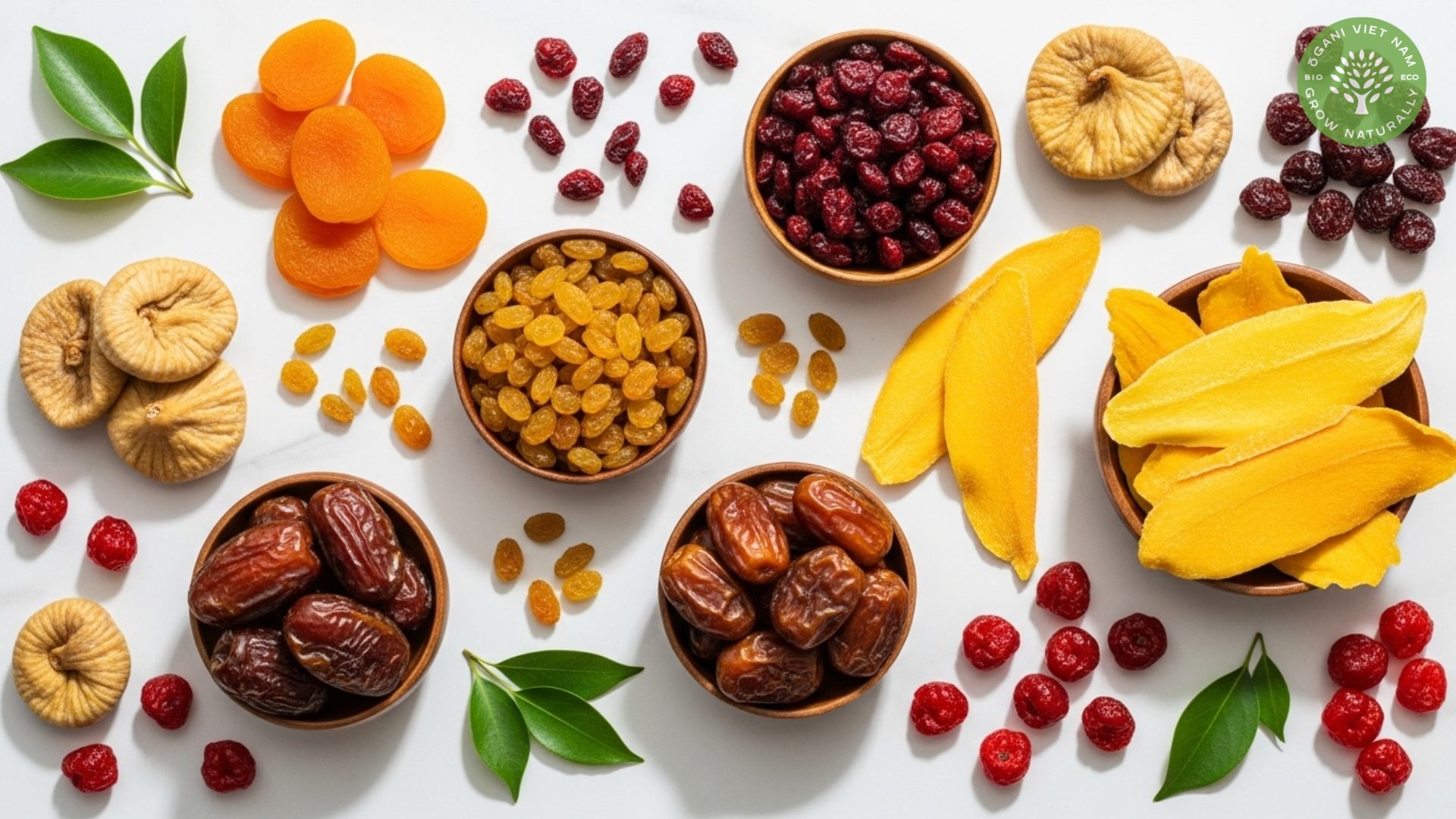Dried fruit is fruit with most of its water content removed through drying methods, creating a concentrated source of nutrients, natural sweetness, and convenience that fits perfectly into modern lifestyles. At Ogani VN, we’ve seen how this ancient preservation method has become one of today’s smartest snacking choices—but only when you know what to look for.
The beauty of dried fruit lies in its simplicity. You’re getting real fruit, just more compact and shelf-stable. But here’s what most people don’t realize: not all dried fruit is created equal, and understanding the differences can completely change your snacking game.
What makes dried fruit a nutritional powerhouse
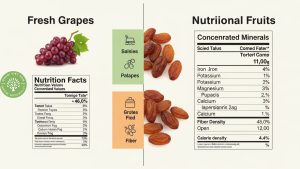
When water evaporates from fresh fruit, something interesting happens—the nutrients become concentrated. That small handful of dried apricots you’re munching? It packs more potassium per serving than its fresh counterpart. The dried cherries in your trail mix deliver a serious dose of antioxidants in a tiny package.
But let’s be honest here. This concentration works both ways. Yes, you’re getting more vitamins and minerals, but you’re also getting more natural sugars and calories in every bite. A cup of fresh grapes has about 60 calories; a cup of raisins? Close to 400. This isn’t a bad thing—it just means you need to be smart about portions.
The fiber content remains largely intact during the drying process, which is fantastic news for your digestive system. We’re talking about both soluble and insoluble fiber that keeps things running smoothly. Many of our customers at Ogani VN tell us they’ve noticed improved digestion after adding a small portion of dried fruit to their breakfast routine.
Magnesium, calcium, and iron stick around too. Dried figs, for instance, become little calcium bombs—perfect if you’re watching your bone health. The natural sugars provide quick energy without the crash you’d get from processed snacks, though pairing dried fruit with nuts or seeds creates an even better balance.
Popular types of dried fruit and their unique benefits
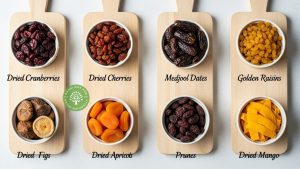
Walk down any health food aisle and you’ll see dozens of options. Let me break down what actually matters.
Dried cranberries and cherries
These tart little gems are packed with antioxidants, particularly anthocyanins that give them their deep red color. Dried cranberries support urinary tract health—something our grandmothers knew long before science confirmed it. Dried cherries? They’re showing promise for muscle recovery and sleep quality because of their natural melatonin content.
Watch out though: many commercial brands add sugar to counter the natural tartness. At Ogani VN, we source unsweetened varieties because the fruit itself has enough character.
Raisins and dates
The classics never go out of style. Raisins are probably the most affordable dried fruit option, loaded with iron and potassium. They’re also ridiculously versatile—throw them in oatmeal, salads, or eat them straight from the box.
Dates are nature’s candy, and I mean that in the best way. The natural sugars in dates come packaged with fiber, making them a smarter sweet treat. Middle Eastern cultures have been using dates for energy and health for thousands of years, and modern nutrition science is finally catching up.
Dried apricots, figs, and prunes
Dried apricots are your go-to for vitamin A and beta-carotene—crucial for eye health and immunity. The vibrant orange color isn’t just pretty; it signals those beneficial compounds at work.
Figs have this unique texture that people either love or find too different. They’re worth trying because they’re mineral powerhouses. Calcium, magnesium, potassium—figs deliver all three.
Prunes (dried plums) have gotten a reputation as “old people food,” which is honestly unfair. They’re incredibly effective for digestive health, and recent research suggests they might support bone density. Plus, they taste like caramelized plums, which is delicious.
Dried tropical fruits
Mango, pineapple, papaya—these bring a vacation vibe to your snack bowl. The tropical varieties often have higher sugar content naturally, and many commercial versions add even more. When we select dried mango at Ogani VN, we specifically look for ones with minimal added sugar because good mango doesn’t need help tasting amazing.
Banana chips are technically dried fruit, though they’re often fried rather than air-dried. Check your labels—the crunchy ones usually have added oil. Not necessarily bad, just different from what you might expect.
How to choose the best quality dried fruit
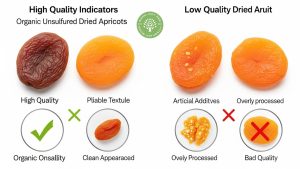
This is where things get real. The dried fruit industry has some tricks that aren’t always in your best interest.
Sulfur dioxide is commonly used to preserve color in dried apricots and other light-colored fruits. It keeps them looking bright and appealing, but some people are sensitive to sulfites. Look for “unsulfured” on the label if this concerns you. Yes, unsulfured apricots look brownish rather than neon orange—that’s normal and natural.
The ingredient list should be short. Like, really short. Ideally, you see one ingredient: the fruit itself. Two ingredients max if a small amount of oil was used. If you’re reading a paragraph of additives, put it back.
Organic certification matters more for some fruits than others. The Environmental Working Group includes some dried fruits on their pesticide concern lists. At Ogani VN, we prioritize organic for berries and stone fruits but are less concerned about items like bananas where the thick peel provides natural protection.
Texture tells you a lot. Good dried fruit should be pliable, not rock-hard or sticky-wet. If it’s too dry, it’s been over-processed or stored too long. Too moist? Risk of mold. You want that Goldilocks zone—flexible but not soggy.
Bulk buying can save money, but only if you’ll actually eat it all. We’ve found that customers who buy reasonable quantities actually consume more dried fruit regularly because it stays fresh and appealing. That giant 5-pound bag that goes stale in your pantry isn’t saving you anything.
Smart ways to enjoy dried fruit daily
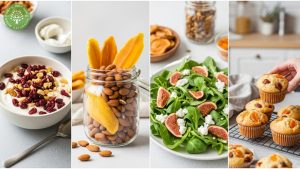
Let’s talk practical application because knowing dried fruit is healthy means nothing if you don’t actually eat it.
Morning routines benefit hugely from dried fruit. Stir a handful into your oatmeal or yogurt—it adds natural sweetness and chewy texture without needing additional sugar. Some of our customers at Ogani VN swear by their “power bowls”: Greek yogurt topped with dried cherries, walnuts, and a drizzle of honey. That’s breakfast that actually sustains you until lunch.
Baking with dried fruit is almost foolproof. The concentrated sweetness means you can reduce added sugars in recipes. Dried cranberries in muffins, chopped dates in energy balls, raisins in cookies—these additions bring moisture and flavor complexity. One trick: if a recipe calls for chocolate chips, try swapping half for dried fruit. Your taste buds won’t miss the chocolate, and your body will thank you.
Trail mix is obvious, but let’s upgrade it. The classic raisin-peanut combo works, sure, but try this instead: dried apricots + raw almonds + dark chocolate chips + a pinch of sea salt. Or dried mango + cashews + coconut flakes. The fruit-to-nut ratio should be roughly equal—too much fruit and it becomes a sugar bomb; too many nuts and you’re overdoing the calories and fat.
Salads transform with the right dried fruit. Spinach salad with dried cranberries, goat cheese, and pecans? Classic for a reason. Arugula with dried figs, prosciutto, and balsamic? Dinner party worthy. The sweet-savory contrast makes vegetables way more interesting, which might be the secret to actually eating more salads.
Cooking savory dishes with dried fruit is a game-changer that Western cuisine is slowly catching onto. Moroccan tagines use dried apricots and dates to add depth. You can simmer dried cherries into a sauce for pork or duck. Raisins in rice pilaf add little bursts of sweetness that balance savory spices. This isn’t weird fusion food—it’s how much of the world has cooked for centuries.
Portion control doesn’t have to feel restrictive. Pre-portion your dried fruit into small containers or bags—about 1/4 cup servings. This serves two purposes: you’re less likely to mindlessly overeat, and you’ve got grab-and-go snacks ready when hunger hits. We suggest keeping a bag in your car, your desk drawer, and your gym bag.

Frequently asked questions about dried fruit
Is dried fruit as healthy as fresh fruit?
Both have merits. Fresh fruit has more water content and vitamin C, while dried fruit concentrates certain nutrients like fiber and minerals. The key difference is calorie density—dried fruit packs more calories per serving, so portions matter. We recommend enjoying both as part of a balanced diet rather than viewing one as superior.
How long does dried fruit last?
Properly stored dried fruit can last 6-12 months in a cool, dark place. Refrigeration extends this to 1-2 years. The less moisture in the fruit, the longer it keeps. Signs it’s gone bad: off smell, visible mold, or an overly hardened texture. At Ogani VN, we date all our products and rotate stock regularly to ensure freshness.
Can diabetics eat dried fruit?
Diabetics can include dried fruit in their diet, but portion control is crucial. The concentrated sugars can spike blood glucose quickly. We suggest pairing small amounts (1-2 tablespoons) with protein or healthy fats to slow sugar absorption. Always consult with your healthcare provider about your specific dietary needs.
Why does some dried fruit look brighter than others?
Color variation usually indicates different processing methods. Bright orange apricots or golden raisins have been treated with sulfur dioxide to preserve color. Brown, natural-looking varieties are unsulfured. Neither is inherently better—it depends on your preferences and any sulfite sensitivities. We carry both options to serve different customer needs.
Should I rinse dried fruit before eating?
It’s not necessary but not harmful either. Some people prefer rinsing to remove any dust or residual processing agents. If you’re eating organic, unsulfured dried fruit from a trusted source like Ogani VN, rinsing is purely personal preference. For bulk bin purchases from unknown sources, a quick rinse isn’t a bad idea.
Making dried fruit part of your healthy lifestyle
Dried fruit deserves a permanent spot in your healthy eating routine—not as a replacement for fresh produce, but as a complementary option that brings convenience, concentrated nutrition, and genuine pleasure to snacking. The sweet chewiness, the portability, the versatility in cooking—these aren’t small benefits. They’re the reasons dried fruit has sustained cultures for millennia.
At Ogani VN, we’re passionate about connecting you with the highest quality dried fruit options because we’ve experienced firsthand how the right products can transform daily eating habits. We carefully source organic, unsulfured varieties that taste like actual fruit, not sugary candy masquerading as health food.
Ready to upgrade your snacking? Browse our curated selection of premium dried fruit at Ogani VN. Whether you’re looking for organic dried mangoes, unsulfured apricots, or perfectly sweet Medjool dates, we’ve done the quality checking so you can focus on enjoying. Visit our website or contact our nutrition team for personalized recommendations based on your taste preferences and health goals. Your better snacking journey starts with one small, delicious step.
Read more:
-
- Organic Dried Mango: Your Complete Guide To Healthy Snacking
- How to Store Dried Mango & Maximize Shelf Life (Pantry, Fridge, Freezer)
- Dried Mango vs Freeze‑Dried Mango: Nutrition, Texture & Best Uses
- How to Rehydrate Dried Red Dragon Fruit (3 Methods) + What to Make with It
- Dried Fruit: Your Complete Guide to Healthy Snacking


